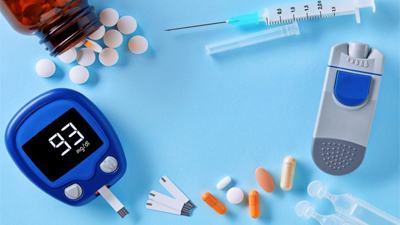How successful are surgeries to treat diabetes?
Surgeons observed positive improvements in sugar metabolism in patients after sleeve gastrectomy operations for the treatment of obesity. Studies have revealed that the substance called GHERLIN secreted by the stomach increases insulin resistance, and the reduction of gherlin released due to stomach reduction, which is a stage of diabetes surgery, significantly improves the use of sugar. Surgical studies intensified in this direction; New surgical methods have been developed with the knowledge that the early secretion of some peptides and GLP.1 secreted in the last part of the small intestine has positive effects on insulin secretion. Turkey is one of the countries where these surgeries, which require high technical skills, are performed the most in the world. High surgical experience is the key to high success with low complications.
Is the surgical treatment of diabetes real?
It is a surgical technique developed for the treatment of Type 2 Diabetes in adults. The effects of a number of peptides in the stomach and intestines, GLP 1, of insulin, which is present in the body but whose secretion is irregular, whose use and amount is insufficient, stimulates the secretion and regulates its use, and provides the use of insulin and sugar. Modifications in the intestines to regulate the release of these peptides have been successful. Metabolic surgery is a surgical method that aims to use insulin more effectively and also treats hypertension, lipid and cholesterol, and uric acid elevation with its side effects. Since it is understood that reducing the hormone GHERLIN secreted by the stomach has a positive effect on the use of insulin in the tissues, the stomach is reduced in volume, and it is aimed to reduce insulin resistance by reducing the GHERLIN hormone in the body. The other mode of action is GLP.1 substance produced and secreted in the last part of the intestine, stimulating beta islets and increasing insulin secretion. The operation performed is metabolic surgery. Metabolic surgery applications not only correct sugar, but also improve cholesterol, fat metabolism, weight and blood pressure problems.
What is the surgical technique?
It is a closed (laparoscopic) surgery for the stomach and intestines, which can be summarized as the reduction of the stomach, the collapse of the last part of the small intestine close to the stomach, and the displacement of the small intestine.
Picture:1. The principle in metabolic surgery procedures is to take the first part of the intestine to the end and the last part to the beginning.
How successful are the surgeries?
92% of diabetic patients who have surgery stop dieting and medications completely. Diabetes mellitus can be controlled with diet and oral antidiabetics in a small proportion of patients who have difficulty in controlling diet with insulin before surgery. About 2% of patients do not benefit from surgery; The reason is currently unknown.
Who is diabetes surgery applied to?
Type 1 and Type 2 There are two types of diabetes; One is Type 1 diabetes, which is mostly seen in young people and children and has genetic or autoimmune origin, and the other is Type 2 diabetes, which occurs after obesity due to genetic origin, dietary habits and lifestyle in adults. 90 percent of all diabetes patients are Type 2 and 10 percent are Type 1.
Different types and properties of drugs are used in the medical treatment of type 2 diabetes. In the course of the disease that cannot be controlled with drugs, treatment with insulin injections is applied. The increase in the ratio of diabetes patients in the world population, not giving up bad eating habits and sedentary lifestyle have brought along the search for new solutions. Since the 2010s, methods called diabetes surgery or metabolic surgery have been added to diabetes treatment protocols. Patients with type 2 diabetes who cannot be controlled with drugs and/or insulin and whose HbA1c value is 7% and above despite treatments, and patients with fasting and postprandial blood C-peptide and insulin levels with normal replacement insulin levels may be suitable patients for these surgical methods.
How many types of diabetes surgery are there?
There are many different types of surgery in practice; In all of these types of surgery, the stomach and small intestine are intervened. Different methods such as transit bipartition, ileal interposition, dudenal switch, SADI-S, gastric bypass should be chosen in line with patient convenience and needs.
Why is the small intestine intervened in the surgical treatment of Type 2 Diabetes?
The aim of metabolic surgery is to provide hormonal regulation. There are peptides and hormones such as GLP-1 that increase insulin sensitivity in the last part of our intestines, and hormones that increase insulin resistance in the head part. Processed foods in packaged products that we use extensively today are digested and absorbed before they reach the last part of our intestines. In this case, the necessary hormones that increase insulin sensitivity cannot be secreted.
Intestinal collapse in the form of moving the last part to the beginning, relocation process, and as a result of encountering the hormones that increase the insulin sensitivity of the foods, the insulin produced in the body but cannot be used becomes usable.





